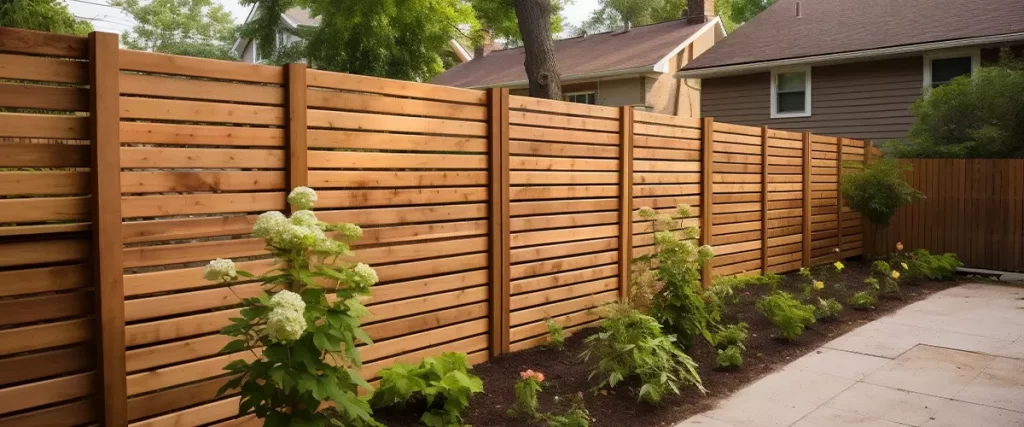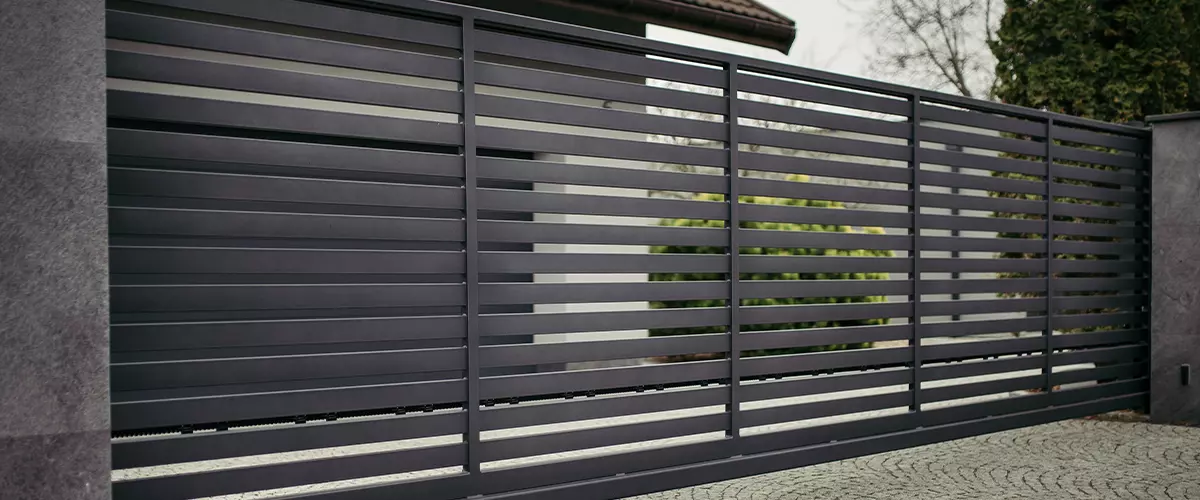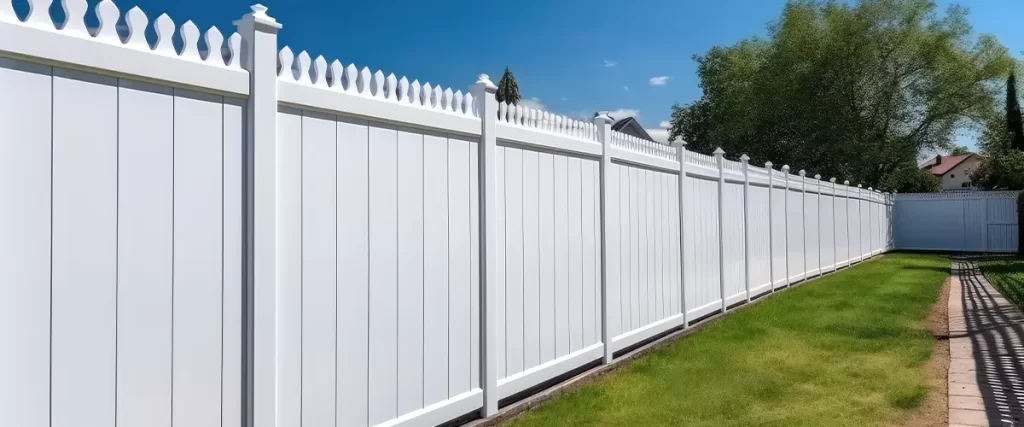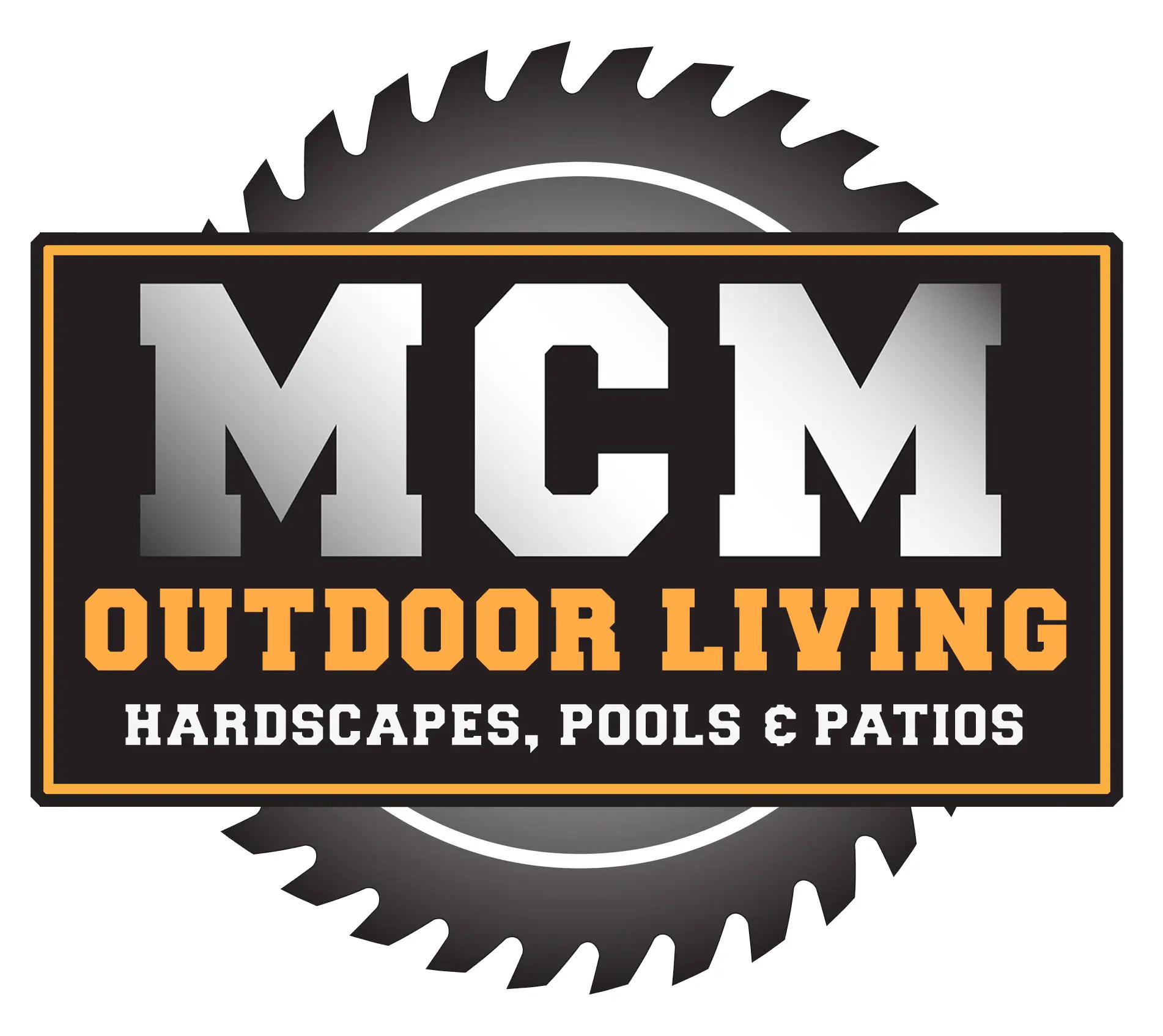15 Types Of Fences For Your Property In Texas
With homeownership rates in Texas nearing 62%, it’s apparent that many Texans value their personal spaces and property boundaries. We know they do because, lately, many people have been asking for fences.
This article will guide you through 15 types of fences popular in Texas so you can make an informed decision for your upcoming fence installation project.
Let’s dive in!

Key Takeaways
- Wood fences add charm to your home but need constant sealing and staining to ensure they last.
- Metal fences last long, are more durable, and don’t need any maintenance. They are, however, more expensive.
- Vinyl fences cost more at the start but save money in the end because they need less work and last longer.
- When choosing your new fence material, you’ll need to consider your needs and budget first and foremost.
Types of Fences for Properties in Texas
#1. Wood Fences
Wood fences are a top pick for many homeowners in general.
Cedar, teak, and even pressure-treated wood add charm and warmth to a property and they are treated against the elements to withstand the elements for a fair amount of time.
The worst thing about wood fences (regardless of material) is that they all need sealing and staining at least once every 2 – 3 years. For the Texas climate, the UV rays will quickly make the stain peel off and the natural color fade.
#2. Iron and Steel Fences
Iron and steel fences are great for your Texas property. They add a touch of class and last for many years without any maintenance.
Although we’re used to seeing these fences around commercial properties, institutes, or very expensive homes, a metal fence has a reasonable price, and anyone can get it.
Especially for wrought iron and steel fences, you can find a lot of designs and intricate patterns that make your property stand out in the neighborhood.
#3. Vinyl Fences
Vinyl fences are a great choice because they have a clean look and need little care. This type of fence does not rot or crack, and it stands up well to harsh sun and heavy rain, both common in Texas.
One thing to remember about vinyl fences, especially if you’re getting a privacy fence, is that they don’t have proper airflow, and strong winds can bend the vinyl boards.
Vinyl fences cost more upfront than wood or chain-link options, but they save you money in the long run, as you won’t have to buy stain and sealants every two years.
#4. Chain-Link Fences
Chain-link fences are strong and long-lasting but not adequate for residential properties.
These types of fences can stand up to bad weather, but they work better for large areas that need some sort of safe perimeters, like a schoolyard, sports fields, or commercial spaces.
The best part about chain-link fences is their cost.
#5. Bamboo Fences
Bamboo is strong and lasts for many years. It also gives a cool, tropical feel to your yard, while still standing tall against wind and rain.
Like any type of wood, make sure to treat it so it can last for as long as possible.
This type of fence is not costly either.
#6. Masonry Fences
Masonry fences are very tough and they stand up well to bad weather and time.
For masonry fences you’ll always need a professional to install them, but you can use many materials, such as brick, stone, or concrete.
These fences add charm, beauty, and an upscale mood to any property.
While a masonry fence costs more than most other types of fences, it offers great value for your money as it lasts longer than many other kinds of fences.
Maintain a masonry fence will only a simple wash now and then.
#7. Wire Fences
Wire fences are used a lot in Texas, especially around ranches and homesteads.
The reason is simple: these fences are cheap enough to surround a large estate like a ranch and keep pets and farm animals safe, while keeping intruders out. A big advantage is that you can see through them, allowing you to watch over your land or animals.
If you want more privacy for your residence, wire fences are far from ideal. Even if you add climbing plants around the fence, you’re just creating maintenance work and chores in the long run.
#8. Electric Fences for Dogs
Electric fences for dogs or farm animals are great. They’re similar to wire fences (that’s actually what they are), but they’re electrified to keep animals from trying to escape the property.
Electric fences are not expensive, but if you’re looking to surround a large property, that cost can become significant.
#9. Teak Fences
Teak fences add a dash of style and luxury to any Texas property. They are made from teak wood, known for its strength, beauty, and durability. Teak stands up well against harsh weather, making it last for many years, even without proper maintenance.
Even if you don’t necessarily have to, we still recommend staining or sealing any wood fence to prolong its lifespan and ensure it remains healthy for as much time as possible.
And maintaining it is important, considering teak is one of the most expensive types of wood fences out there.
#10. Pallet Fences
Pallet fences add a rustic look to your home for a budget. These are actually wooden pallets that are easy to get from either manufacturers or large warehouses that don’t need them anymore.
It’s a smart pick if you want a unique fence but have less money to spend. This fence type is not only cost-friendly, but it’s also earth-friendly by reusing materials.
Remember, pallet fences are still wood, so staining and sealing is required.
#11. Stone Fences
Stone fences are tough and can last many years. These are actually just another type of masonry fence, and it’s recommended to work with a professional to ensure the construction is safe and reliable.
The last thing you want is a stone fence collapsing and putting your life at risk.
Stone fences are more expensive but they sure make your property look upscale and beautiful.
#12. Lattice Fences
Lattice fences are great for many things, but we rarely see homeowners use them on their properties here in Texas.
Instead, they are much better for a garden or to give some contour to your landscape.
They’re great for climbing plants as well. This type of fence is made from wood or vinyl strips that cross each other to make a pattern.
They look pretty, but we wouldn’t recommend them for a privacy fence around your property.
#13. Picket Fences
Picket fences are great for a classic look, ideal if you live in a friendly neighborhood and you just want to keep your pets in.
Many Texas homeowners like them because they add charm to a home. They are made of wood or vinyl and have sharp points at the top. This fence style is often painted white.
The gaps between the pickets allow you to see through the fence. So, it’s not best for privacy but perfect for keeping pets and kids safe in your yard. Picket fences usually stand three to four feet tall.
#14. Wrought Iron Fences
Wrought iron fences add a touch of class to any home. They are strong and last for many years. These fences have lovely designs that make your property stand out, but they’re far from ideal if you’re looking to increase your privacy.
Wrought iron fences are fairly expensive, but if you decide to get this upgrade, they’ll increase your home’s value and aesthetics, potentially making home buyers fall in love with your property.
#15. Split-Rail Fences
Split-rail fences are rustic and warm and very commonly used on ranches and homesteads.
These fences are made from wood logs split into rails, and they are a favorite among Texas homeowners with big yards – they have a long history in these parts.
Split-rail fences are great for marking your land without blocking the view. If you have pets or kids, use wire mesh to keep them safe inside.

How to Choose the Right Fence for Your Texas Property
Consider your needs and budget
You might want privacy, safety for kids and pets, or to mark your land’s edges. Some people get fences just because they look nice.
Also, consider your budget.
Wood fences are often cheaper but need lots of care to stop them from rotting or getting bugs in them. Over time, the cost to maintain a cedar fence will pile up, and soon enough, you’ll realize that maybe a metal or vinyl fence would’ve been better.
Metal fences last longer and need less upkeep, but they can cost more at the start.
Research local regulations and restrictions
It is vital to know local rules and restrictions for fences. These may include:
- The height limit for fences in your area.
- How far from the street line can you place your fence
- What materials you’re allowed to use for your fence
- If you need a permit to build a fence
- Rules about sharing a fence with your neighbor
- What side of the fence should face towards the road
Think about the purpose of the fence
Your fence should do what you need it to.
- If you want privacy, choose a tall, solid privacy fence. Wood and vinyl fences are usually great for that.
- If safety is your goal, go for a sturdy metal or wood fence.
- For those who just want to mark their properties, split-rail fences or wire fences are perfect.
- And if you want to impress your neighbors, get a masonry or stone fence and combine it with a beautiful wrought iron fence as well.

Your Next Steps for a New Fence
Building a new fence for your home in Northern Texas is a beautiful project with lots of benefits.
Not only it increases the safety of your loved ones, but it also enhances your privacy and can even complement the look of your home.
If you want a professionally built and installed fence, our experts at McKinley Construction Management can take care of that for you.
Reach out to us and we’ll circle back with a personalized quote for your new privacy fence installation.
